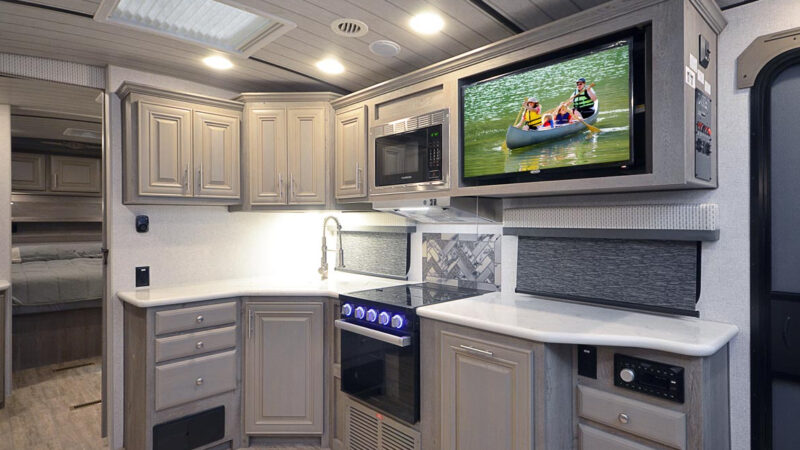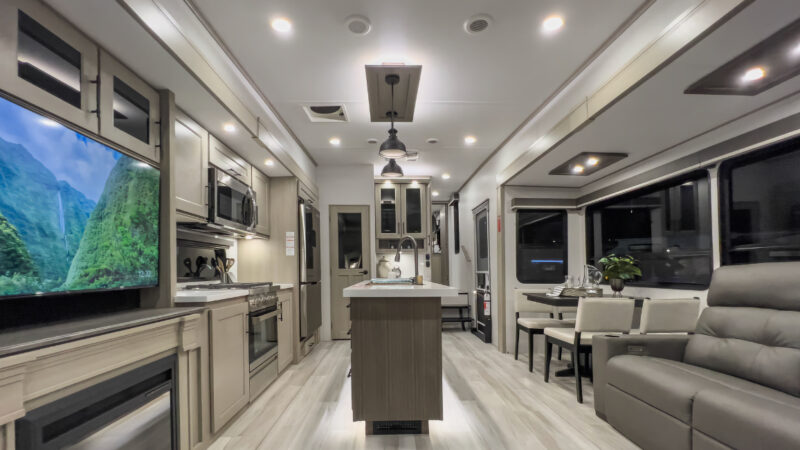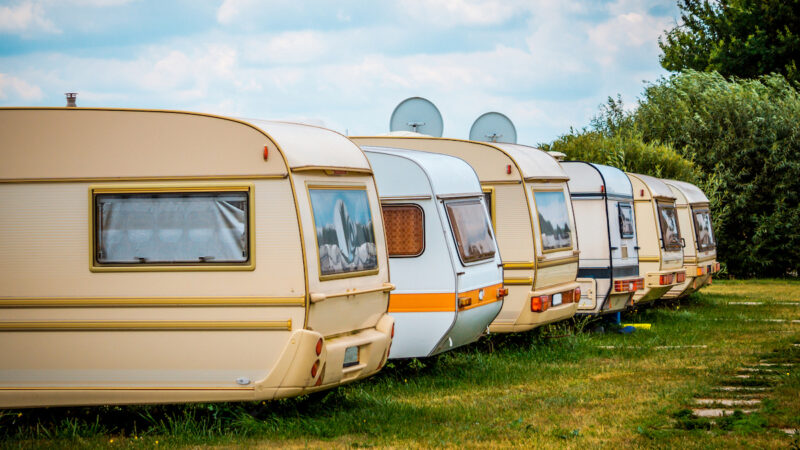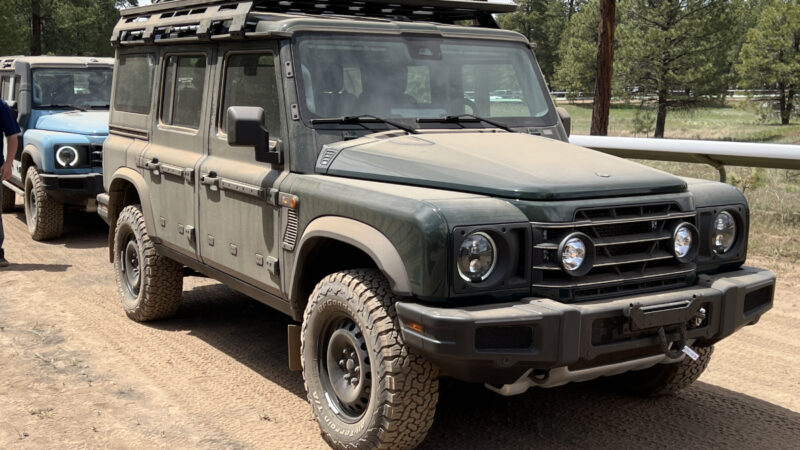Test Drive: Jayco’s Redhawk Still Soars
If you’ve spent a lot of time surrounded by palmettos, longleaf pines, and live oaks, then the entrance road to Clearwater Lake Campground in central Florida’s Ocala National Forest might not have thrilled you like it thrilled me. But to a denizen of northern New England—who’d woken up that morning under two comforters in still-snowy Maine—the setting was bewitching: a lush little corridor, dark green and mysterious, lit up by my low beams and hung lavishly with curtains of Spanish moss.
The headlights belonged to a brand-new Jayco Redhawk, one of the most popular and affordable Class Cs on the road. Its floorplan was the model’s largest, 32 feet stem to stern, and the biggest ride I’d piloted in quite some time (floorplan 31F, specifically.) The company’s marketing materials pitch the Redhawk as kind of a gateway drug: “If motorhome ownership seems daunting,” reads the website, “dip your toe in with the Jayco Redhawk.” Most daunting to this toe-dipper—more of a camper-van guy—had been the prospect of driving the Redhawk through rush-hour traffic on the Florida Turnpike.
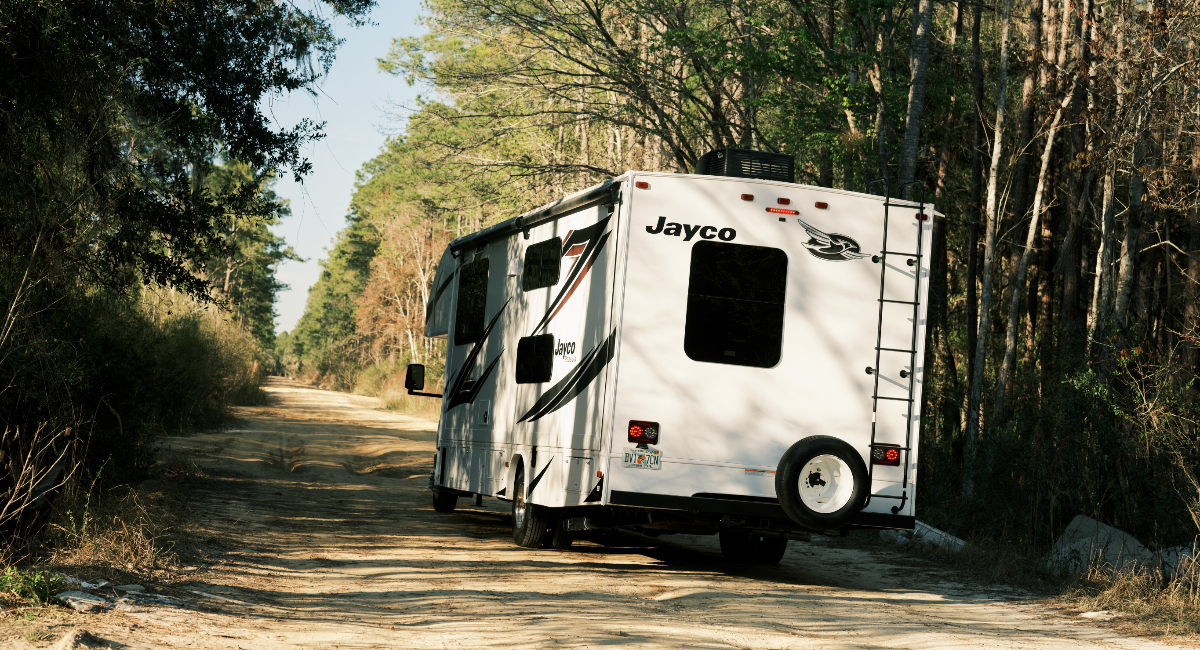
Brian Kevin with the 2024 Jayco Redhawk RV on Friday, February 2, 2024 at the Clearwater Creek Campground in the Ocala National Forest in Paisley, Florida.
(Zack Wittman for Wild Sam)
A Smooth Ride
As I cruised down the Southern Gothic access road to Clearwater Lake, highway driving was behind me. And surprise number one about the Redhawk? The thing handled pretty darn elegantly. Built on a Ford E-450 chassis, it runs on the 7.3-liter V8 engine that Ford introduced in 2020—both surprisingly muscular and surprisingly quiet. Road noise and vibration? Slight. Swaying while cornering or getting torched by a semi? Minimal. The Redhawk, for the most part, felt rigid, stable, and responsive. And I felt surprisingly confident behind the wheel.
Later, I talked to Cory Weatherton, Jayco’s director of product development, who attributed a lot of those smooth moves to aspects of the company’s ride-and-handling package. Hellwig Helper Springs installed atop the leaf springs are a boon to left-right stability and weight distribution. Rubber isolation mounts absorb shock and dampen sound. (Ford actually installs these little pucks on the chassis rails, but Weatherton says Jayco is the only manufacturer to reinstall them after upfitting to support the house).
The Redhawk’s side-view cameras—which Jayco introduced in 2022—came in clutch for changing lanes and alerting me to an unlatched generator door left flapping on the highway—also for backing into a narrow campsite after dark. The optional automatic hydraulic-leveling system sets a Redhawk owner back $3,900, but the one on my rig seemed worth every penny upon rolling into camp after quiet hours.
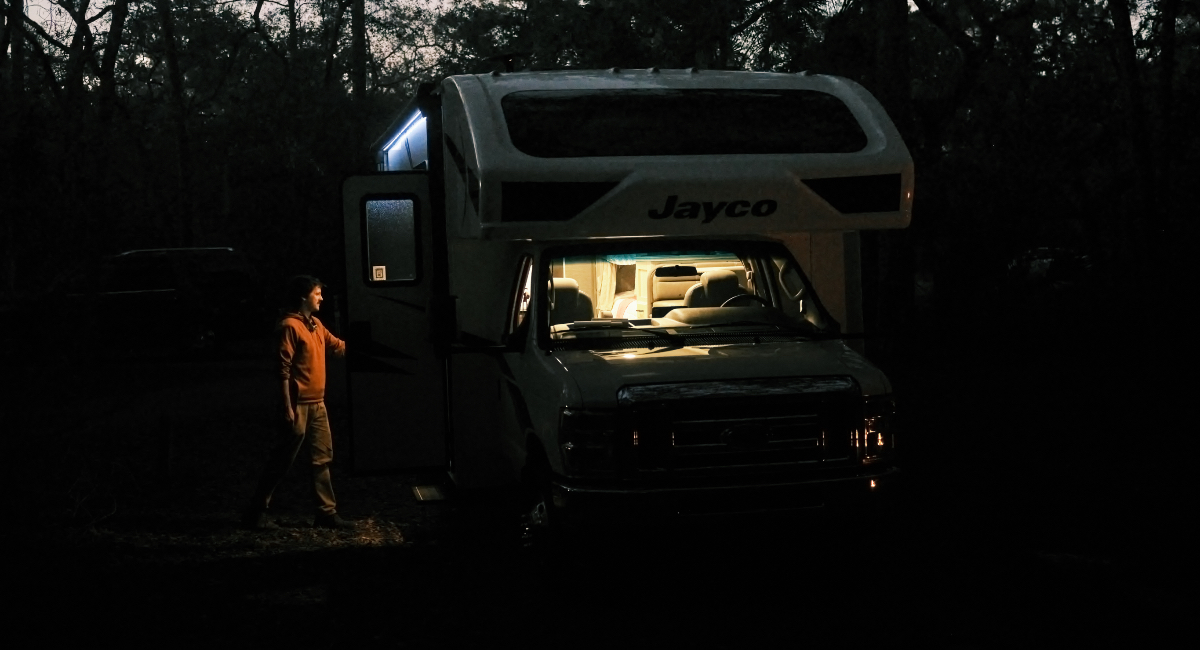
Photo Credit: Zack Wittman
At the Campsite
In the morning, I woke up to a chorus of repetitive, alien trills that echoed across the campground. Some kind of Southern air raid siren? A futuristic car alarm? Nope—just sandhill cranes, which strut around the edges of Clearwater Lake and serve as the unofficial Ocala wake-up call.
I rolled out of the queen-size bed in the Redhawk’s rear, made coffee, and considered where to spend a lazy hour with a mug and a magazine. The 31F sleeps seven: in the queen, in a pair of stacked single bunks, on a jack-knife sofa, and in a full-size cab-over bunk. I clambered onto the latter to bask in the sunlight that poured in the front cap when I lifted the power shade. Jayco dealers like to gush about the single-piece, seamless front cap on the brand’s Class Cs, and this year’s Redhawk introduces a panoramic window stretching across it. It’s a windshield-style installation, Weatherton says, automotive-bonded glass in a specially molded cap, the end product of a whole lot of R&D to let in light but not water. As a reading nook, it was a winner, and the whole rig would have felt dimmer and more enclosed without it—plus, imagine the stargazing when you’re sleeping up there.
The Redhawk, with a 2024 base MSRP around $153,000, makes smart trade-offs to keep the sticker price appealing to toe-dippers while still feeling cushy. Sure, the TPO roof (that’s thermoplastic polyolefin, a popular composite material) might benefit from a little more regular maintenance than the fiberglass roof on Jayco’s step-up Greyhawk. And where that latter model has standard solar and multiplex wiring, a 200-watt solar panel is an option on the Redhawk, and you’ll be flipping analog switches on the control panel. This year’s model swaps what had been a gas-electric fridge in the kitchen for a more economical 12-volt (though it’s 10 cubic feet, up from 8).
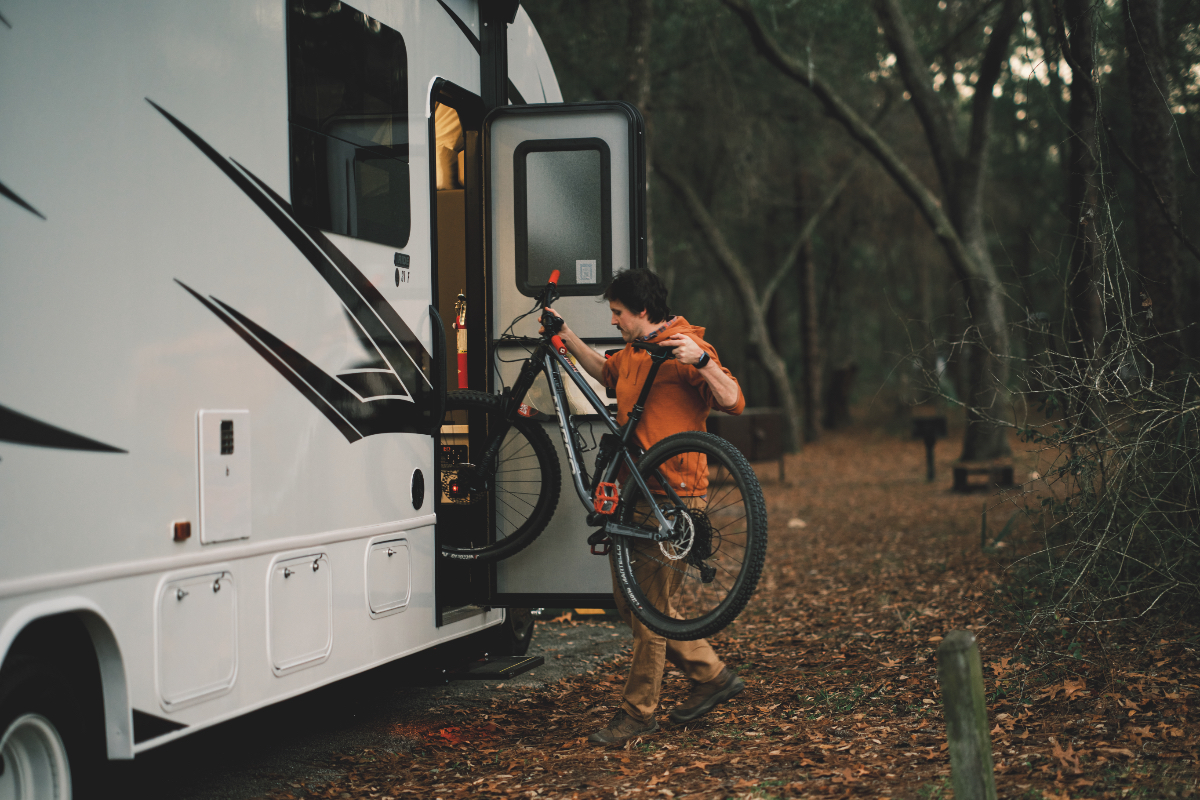
Photo Credit: Zack Wittman
Don’t Call It Entry-Level
But the Redhawk sure felt comfortable for a few days in Ocala. A single slide runs almost the length of the RV, offering plenty of room to wheel around the kitchen and living area—even to navigate around a bike I brought inside at night. The kitchen felt well appointed, with a stainless sink, a three-burner Furrion range, a residential-size microwave, and hardwood cabinets (plenty of ’em—the 31F makes great use of space). My Redhawk had the optional Modern Farmhouse interior, which, if it didn’t feel like a farmhouse exactly, did feel nice and bright, thanks to white-finished wood throughout (très chic matte-black fixtures too). A pop up 120-volt charging station next to the dinette made it a cinch to set up the mobile office (and if you’re on shore power, the nightstand USB and wireless charging is a nice touch for keeping devices juiced overnight).
Jayco debuted the Redhawk in its 2013 model year, and as the series launches into its second decade, it’s not so much breaking new ground as year after year redefining what it means to be a starter Class C. Or a toe-dipping Class C. Or whatever you want to call it.
“When I first started at Jayco, I would refer to the Redhawk as ‘entry-level,’” Weatherton says. Then a buyer gave him a hard time for selling the robust little rig short. “So now I’ve changed my lingo,” he says. “I just call it our ‘base trim level’ now. It gives you absolutely everything you need for camping, just maybe not all of your wants.”
All I wanted? A comfy, low-maintenance base camp someplace warm, a little respite from puffy-coat weather up north. After a few hours mountain biking in shirtsleeves and some communing with largemouth bass on the lake, I shook open a lawn chair, pumped a little Jimmy Buffett from the Redhawk’s marine-grade exterior speakers (hey, when in Florida), then extended the 18-foot automatic awning to hide out from the late-day sun. I may or may not have dozed. After a while, the LED lights along the awning alerted me that it was campfire time, and I wandered off to find some kindling out there among the live oaks.
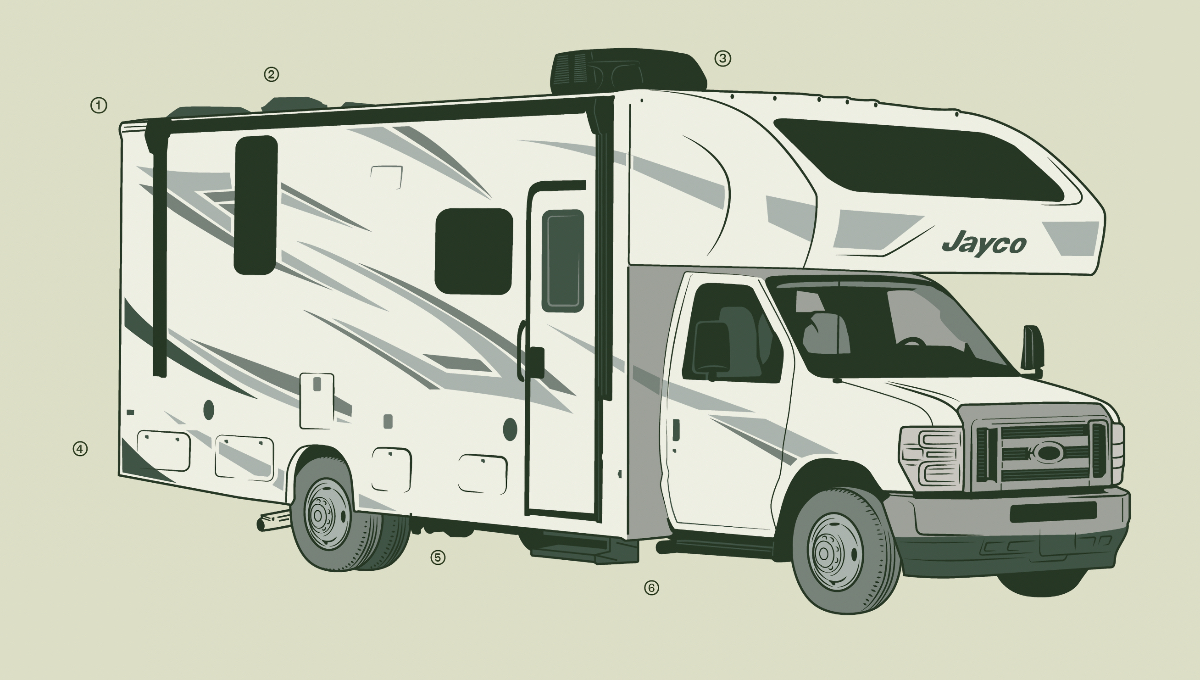
Illustration Courtesy of Wildsam
Standout Specs
- Five floorplans on the 2024 Redhawk include length options at 26’8″, 28’8″ and 32’6″.
- A skylight above the shower offers extra head space (there’s an outdoor shower setup too).
- A ducted, 15,000-BTU Coleman-Mach A/C unit comes standard. Dual A/C units are an option.
- The smallest, 24B floorplan has a 43-gallon freshwater capacity; the 31F holds 47 gallons. All floorplans have 40–41-gallon gray and 30–32-gallon black tanks.
- A 12.2-gallon propane tank fuels, among other things, a 30,000-BTU auto-ignition furnace.
- The electric-powered entrance step has an integrated compartment to stow the 12-volt lead-acid house battery. A 4,000-watt generator feeds it in the absence of shore power (rooftop solar is an add-on).
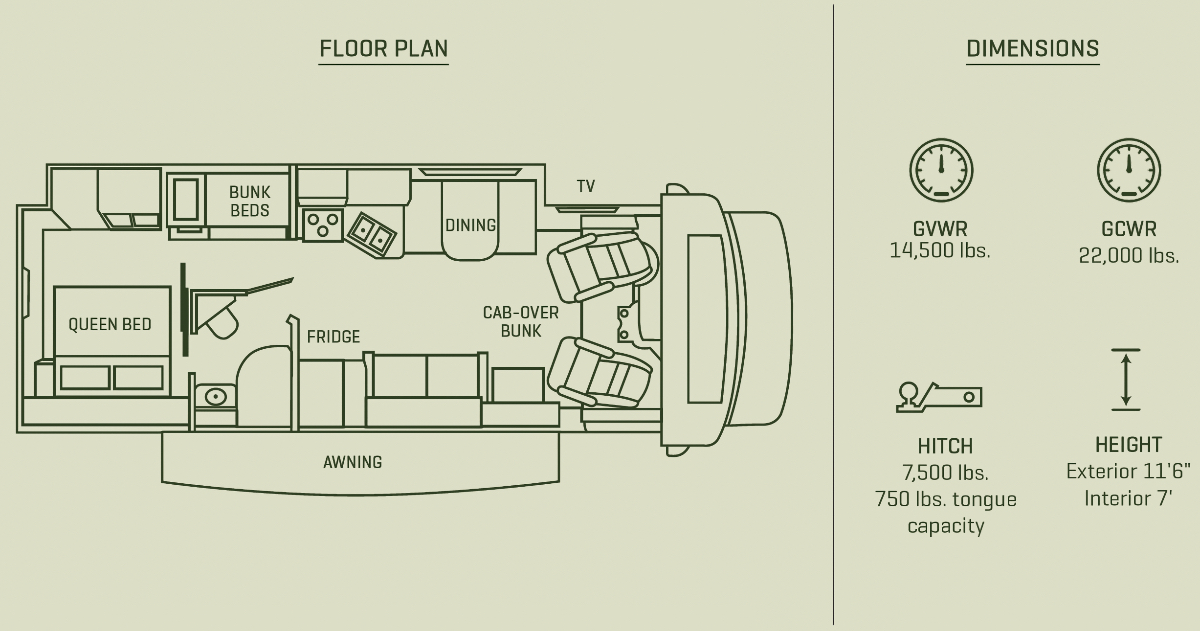
Illustration Courtesy of Wildsam
This article originally appeared in Wildsam magazine. For more Wildsam content, sign up for our newsletter.
The post Test Drive: Jayco’s Redhawk Still Soars appeared first on RV.com.
Source: https://www.rv.com/rv/test-drive-jaycos-redhawk-still-soars/



